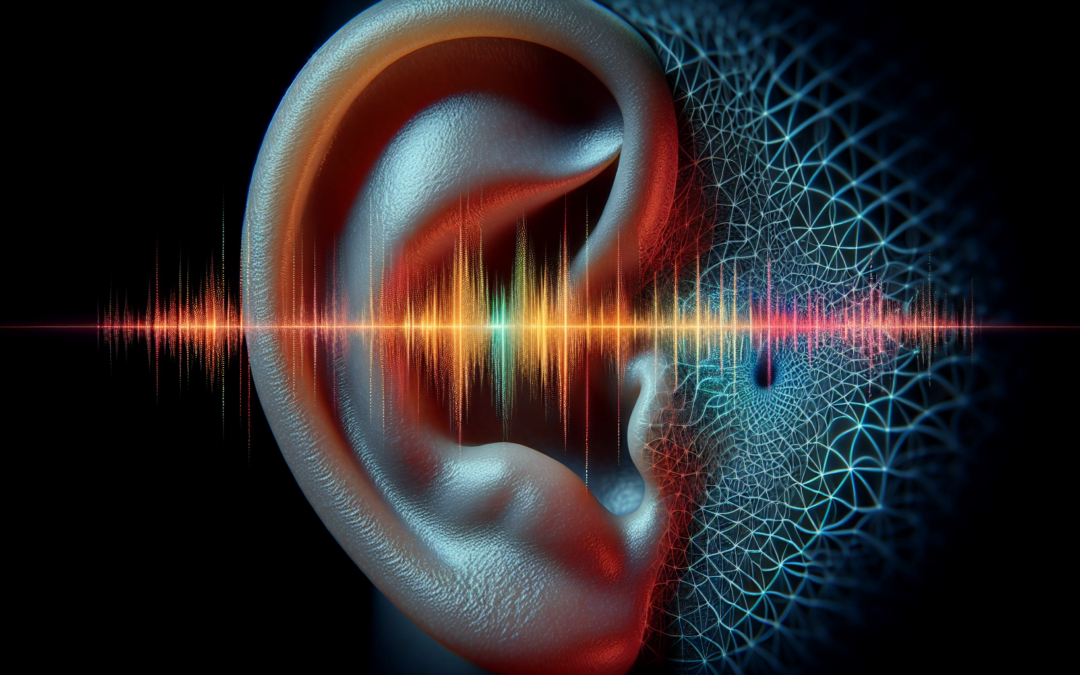Imagine a world where the sounds around you slowly fade away, where conversations become muffled and the sweet melodies of your favorite song become distant echoes. This is the reality for millions of individuals experiencing hearing loss. If you or a loved one suspect that hearing loss may be a factor, it is crucial to understand the importance of hearing loss tests. Whether you’re curious about the process or contemplating taking the next step towards a clearer world, this article will provide a comprehensive introduction to hearing loss tests, shedding light on the diagnostic process and potential solutions that can bring back the symphony of sounds you cherish.

Understanding the Causes of Hearing Loss
When it comes to understanding hearing loss, it’s important to know that there are various causes that can contribute to this condition. By being aware of the different causes, you can take steps to prevent or manage hearing loss effectively.
Age-related hearing loss
One of the most common causes of hearing loss is related to age. As people get older, the structures within the ear can become less flexible, resulting in a gradual decline in hearing ability. Age-related hearing loss, also known as presbycusis, typically affects both ears and makes it harder to hear high-pitched sounds or understand speech in noisy environments.
Noise-induced hearing loss
Excessive exposure to loud sounds can damage the sensitive hair cells within the inner ear, leading to noise-induced hearing loss. This can occur in various settings, such as workplaces with noisy machinery, concerts, or even listening to music at high volumes through headphones. It’s important to protect your ears from loud noises by using earplugs or earmuffs and taking breaks from noisy environments.
Genetic causes of hearing loss
Sometimes, hearing loss can be traced back to genetic factors. Certain genetic mutations can affect the structure or function of the inner ear, leading to hearing loss. In some cases, these genetic causes may be present at birth, while in others, they may manifest later in life. Genetic counseling and screening can help identify individuals who may be at a higher risk of developing hearing loss due to genetic factors.
Diseases and infections that can cause hearing loss
Certain diseases and infections can also play a role in causing hearing loss. Conditions such as otitis media (middle ear infection), meningitis, and mumps can damage the structures within the ear and result in temporary or permanent hearing loss. It’s important to seek medical treatment for any infections promptly to minimize the risk of hearing loss.
Medication-induced hearing loss
Some medications, known as ototoxic drugs, can have side effects that affect hearing. These medications can damage the hair cells or nerves within the ear, leading to hearing loss. Examples of ototoxic drugs include certain antibiotics, chemotherapy drugs, and nonsteroidal anti-inflammatory drugs (NSAIDs). If you’re taking any medications, it’s essential to discuss potential side effects, including hearing loss, with your healthcare provider.
Different Types of Hearing Loss
Hearing loss can be categorized into different types, each with unique characteristics and underlying causes. Understanding the specific type of hearing loss is crucial in determining the most appropriate treatment options.
Conductive hearing loss
Conductive hearing loss occurs when there is a problem in the outer or middle ear that prevents sound from being conducted properly to the inner ear. This can be caused by conditions such as earwax buildup, fluid in the middle ear, or a perforated eardrum. Conductive hearing loss is often treatable and can be managed with medical interventions or surgical procedures.
Sensorineural hearing loss
Sensorineural hearing loss is the most common type of permanent hearing loss. It occurs when there is damage to the sensory cells (hair cells) within the inner ear or to the auditory nerve. Sensorineural hearing loss can be caused by factors such as noise exposure, aging, genetic conditions, or certain medications. Treatment options for sensorineural hearing loss include hearing aids or cochlear implants.
Mixed hearing loss
Mixed hearing loss is a combination of both conductive and sensorineural hearing loss. This means that there is both a problem with the transmission of sound to the inner ear and damage to the sensory cells or auditory nerve. Treatment for mixed hearing loss will depend on the specific causes and may involve a combination of medical interventions, hearing aids, or other assistive devices.
Signs and Symptoms of Hearing Loss
Recognizing the signs and symptoms of hearing loss is crucial in seeking early intervention and improving overall quality of life. If you or someone you know experiences any of these symptoms, it may be an indication of hearing loss.
Difficulty understanding speech
One of the common signs of hearing loss is having difficulty understanding speech, especially in noisy environments or when multiple people are talking. You may find yourself asking others to repeat themselves frequently or misinterpreting what is being said.
Frequent need for people to repeat themselves
If you often find yourself asking others to repeat what they’ve said, it could be a sign of hearing loss. This can happen in various situations, such as during conversations, while watching television, or during phone calls.
Trouble hearing in noisy environments
Hearing loss can make it challenging to distinguish speech or sounds from background noise. If you struggle to hear conversations or understand what is being said in noisy environments, such as restaurants or social gatherings, it may indicate the presence of hearing loss.
Increased volume on electronics
Another sign of hearing loss can be the need to turn up the volume on electronics, such as the television, radio, or personal audio devices. If you find yourself consistently needing higher volumes to hear clearly, it’s important to consider the possibility of hearing loss.
Ringing or buzzing in the ears (tinnitus)
Tinnitus refers to the perception of ringing, buzzing, or other sounds in the ears without any external source. While tinnitus can have various causes, it can also be a symptom of underlying hearing loss. If you experience persistent tinnitus along with any other signs of hearing loss, it’s essential to have your hearing evaluated.
The Importance of Early Detection
Early detection of hearing loss is vital for several reasons. By recognizing and addressing hearing loss promptly, you can minimize its impact on your daily life and overall well-being.
Impact of untreated hearing loss
Untreated hearing loss can significantly affect your quality of life. It can lead to communication difficulties, social isolation, frustration, and even depression. Hearing loss can also impact your cognitive abilities, as your brain needs consistent stimulation from sound to maintain its auditory processing abilities.
Benefits of early intervention
Early intervention for hearing loss can provide numerous benefits. It can improve speech and language development in children, enhance communication skills in adults, and promote overall cognitive function. Hearing aids, cochlear implants, or other assistive devices can help individuals with hearing loss regain their ability to hear and actively participate in various activities.
Preventing further deterioration
Delaying treatment for hearing loss can lead to further deterioration of hearing abilities. By seeking early intervention, you can potentially slow down or prevent the progression of hearing loss. Regular hearing tests and follow-ups with healthcare professionals specialized in audiology can help monitor your hearing health and address any changes promptly.

Overview of Hearing Loss Tests
To determine the extent and nature of hearing loss, various tests are available that assess different aspects of auditory function. These tests help audiologists diagnose hearing loss, provide treatment recommendations, and monitor changes in hearing abilities over time.
Pure-tone audiometry
Pure-tone audiometry is one of the most common hearing tests used to evaluate hearing sensitivity. The test involves wearing headphones and listening to different tones at various frequencies and volumes. The individual responds by indicating when they can hear each tone, and the results are plotted on an audiogram.
Speech audiometry
Speech audiometry assesses an individual’s ability to understand speech. It measures the speech recognition threshold (the softest level at which speech can be heard) and the word recognition score (the percentage of correctly identified words). This test complements pure-tone audiometry by providing information about speech understanding abilities.
Otoacoustic emissions (OAE)
Otoacoustic emissions testing measures the sounds produced by the inner ear in response to a stimulus. It assesses the integrity of the cochlea, particularly the outer hair cells. OAE testing is commonly used in newborn hearing screenings and can help identify potential hearing problems at an early stage.
Auditory brainstem response (ABR)
Auditory brainstem response testing evaluates the electrical activity of the auditory nerve and brainstem in response to sound stimuli. Electrodes are placed on the scalp or earlobes, and the responses are recorded. ABR testing is particularly useful in diagnosing hearing loss in infants who may not be able to participate actively in other tests.
Tympanometry
Tympanometry measures the movement of the eardrum in response to changes in air pressure. It helps assess the function of the middle ear, and specifically the mobility of the eardrum and the ossicles. Tympanometry is useful for detecting conditions such as otitis media or eustachian tube dysfunction.
Acoustic reflex testing
Acoustic reflex testing evaluates the reflexive contraction of the middle ear muscles in response to loud sounds. This test helps assess the integrity of the auditory pathway, particularly the eighth cranial nerve, which connects the ear to the brain. It provides additional information about the type and degree of hearing loss.
High-frequency audiometry
High-frequency audiometry assesses an individual’s ability to hear sounds at frequencies above the typical range of pure-tone audiometry. It is particularly useful in detecting early signs of noise-induced hearing loss, as high-frequency sounds are often affected first.
Electrocochleography (ECoG)
Electrocochleography measures the electrical responses generated by the cochlea in response to sound stimuli. It helps evaluate the presence of excess fluid or other abnormalities within the cochlea, which can affect hearing function.
Vestibular evoked myogenic potentials (VEMP)
Vestibular evoked myogenic potentials testing assesses the function of the vestibular system, which is responsible for balance and spatial orientation. It measures the electrical responses of certain muscles in response to sound or other stimuli.
Computed tomography (CT) scan
A CT scan is an imaging technique that provides detailed information about the structures of the inner ear and surrounding areas. It can help identify anatomical abnormalities, such as tumors or malformations, that may be contributing to hearing loss. CT scans are often used in surgical planning for certain conditions, such as cholesteatoma.
Pure-tone Audiometry
Pure-tone audiometry is a fundamental test used to measure an individual’s hearing sensitivity across various frequencies. This test is essential in determining the type and degree of hearing loss.
Procedure and equipment used
During a pure-tone audiometry test, the individual wears headphones or inserts earphones and listens to tones played at different frequencies, starting from low to high pitches. The individual is then asked to indicate when they can hear each tone by pressing a button or raising their hand.
How it measures hearing sensitivity
Pure-tone audiometry measures the softest level of sound, or threshold, that an individual can hear at each frequency tested. The results are plotted on an audiogram, which is a graphical representation of an individual’s hearing abilities in relation to the general population.
Air and bone conduction testing
Pure-tone audiometry involves two methods of delivering sound: air conduction and bone conduction. Air conduction testing assesses the overall hearing ability, as the tones are presented through headphones or earphones. Bone conduction testing bypasses the outer and middle ear by delivering sound directly to the inner ear through a small bone vibrator placed behind the ear. This helps determine if the hearing loss is conductive or sensorineural in nature.
Interpreting the results
The results of a pure-tone audiometry test are presented on an audiogram. The audiogram shows the thresholds for each frequency tested, allowing healthcare professionals to determine the type and degree of hearing loss. The degree of hearing loss can range from mild to profound, while the type of hearing loss can be classified as conductive, sensorineural, or mixed. This information is crucial in developing an appropriate treatment plan for individuals with hearing loss.

Speech Audiometry
Speech audiometry is an important component of a comprehensive hearing evaluation as it assesses an individual’s ability to understand and recognize speech. This test provides valuable information about an individual’s speech perception abilities in various listening conditions.
Purpose and use in assessing hearing loss
The purpose of speech audiometry is to measure an individual’s speech recognition abilities, which can be influenced by factors such as background noise, clarity of speech, and familiarity with the language being used. This test helps determine the impact of hearing loss on an individual’s ability to understand speech in different situations.
Speech recognition threshold
The speech recognition threshold (SRT) is the softest level at which an individual can correctly identify and understand speech. This threshold is measured by presenting a series of words or sentences at different volume levels, and the individual responds by repeating or indicating their understanding of the speech.
Word recognition score
The word recognition score (WRS) measures an individual’s ability to correctly repeat or identify a set of words presented at a comfortable listening level. This test provides information about the clarity of speech and the percentage of words understood accurately.
How it complements pure-tone audiometry
Speech audiometry complements pure-tone audiometry by providing valuable information about an individual’s ability to understand and recognize speech. While pure-tone audiometry measures hearing sensitivity, speech audiometry assesses an individual’s real-world listening abilities. By combining the results of both tests, healthcare professionals can develop a comprehensive understanding of an individual’s overall hearing abilities and recommend appropriate treatment options.
Otoacoustic Emissions (OAE)
Otoacoustic emissions (OAE) testing is a non-invasive and objective method used to assess the function of the inner ear, particularly the cochlea. This test measures the sounds produced by the inner ear in response to external stimuli and provides valuable information about cochlear functioning.
How OAE testing works
OAE testing involves the use of a small probe that contains a microphone and speaker. The probe is placed in the ear canal, and a series of sounds, typically clicks or tones, are presented. The microphone measures the sounds generated by the outer hair cells in the cochlea in response to the stimuli.
Uses in newborn hearing screening
OAE testing is commonly used in newborn hearing screening programs. It can quickly and accurately assess the integrity of the cochlea and identify potential hearing problems in infants. OAE testing is often performed within the first few days of a baby’s life, providing early detection and intervention for hearing loss.
Assessment of cochlear functioning
OAE testing provides valuable information about the functioning of the cochlea, particularly the outer hair cells. If no OAE response is detected, it may indicate a problem with the outer hair cells or other structures within the cochlea. This information is helpful in diagnosing the specific site of hearing loss and guiding appropriate treatment options.
Limitations of OAE testing
While OAE testing is a valuable tool in assessing cochlear functioning, it has certain limitations. OAE testing cannot determine the exact type or degree of hearing loss, as it only measures the outer hair cell function. In cases where OAE results are abnormal, further testing, such as pure-tone audiometry or auditory brainstem response (ABR) testing, may be necessary to provide a comprehensive evaluation of hearing abilities.
Auditory Brainstem Response (ABR)
Auditory brainstem response (ABR) testing is a non-invasive procedure that measures the electrical activity of the auditory nerve and brainstem in response to sound stimuli. This test provides valuable information about hearing abilities, particularly in individuals who may not be able to actively participate in other tests, such as infants or individuals with developmental disabilities.
Principles behind ABR testing
ABR testing is based on the principle that when sound is presented to the ear, the auditory nerve and brainstem generate electrical responses. These responses can be recorded using electrodes placed on the scalp or earlobes. By analyzing the recorded responses, healthcare professionals can assess the integrity of the auditory pathway and identify any abnormalities.
Electrode placement and signal recording
During ABR testing, electrodes are placed on specific points on the scalp or earlobes. These electrodes pick up the electrical responses generated by the auditory nerve and brainstem. The responses are then amplified, filtered, and analyzed to determine the individual’s hearing abilities.
Identification of hearing loss in infants
ABR testing is particularly useful in identifying hearing loss in infants who may not be able to actively participate in other tests, such as pure-tone audiometry or speech audiometry. The test can accurately assess the presence and degree of hearing loss, providing valuable information for early intervention and treatment.
Diagnostic tool for neurological conditions
ABR testing is not only used for assessing hearing abilities but can also provide a diagnostic tool for various neurological conditions. By analyzing the electrical responses generated by the auditory pathway, healthcare professionals can identify abnormalities or disorders that may affect auditory processing, such as tumors, brainstem lesions, or multiple sclerosis.
Computed Tomography (CT) Scan
Computed tomography (CT) scans are imaging techniques commonly used to assess the structures of the inner ear and surrounding areas. This diagnostic tool provides detailed information about the anatomy of the ear and can help identify any abnormalities contributing to hearing loss.
Imaging technique for assessing inner ear structures
CT scans use a combination of X-rays and computer technology to create detailed cross-sectional images of the body. For assessing hearing loss, CT scans focus on the structures of the inner ear, such as the cochlea, vestibular system, and temporal bone.
Identification of anatomical abnormalities
CT scans can help identify anatomical abnormalities that may contribute to hearing loss. This includes conditions such as malformations of the inner ear, bony abnormalities, or tumors. By visualizing these structures, healthcare professionals can determine the underlying cause of the hearing loss and develop appropriate treatment plans.
Detection of cholesteatoma or other middle ear pathologies
CT scans are particularly useful in detecting middle ear pathologies, such as cholesteatoma. Cholesteatoma is the growth of skin cells within the middle ear, which can lead to conductive hearing loss. The detailed images provided by a CT scan can help identify the presence and extent of cholesteatoma, guiding surgical planning for its removal.
Role of CT scan in surgical planning
For individuals considering surgical interventions, such as cochlear implants or middle ear reconstructive surgery, a CT scan is often required as part of the pre-operative assessment. The images provide important information for surgical planning, allowing the surgeon to visualize the anatomy and determine the best approach for the procedure.
Understanding the causes, types, signs, and symptoms of hearing loss is essential in recognizing the need for early intervention. By undergoing comprehensive hearing loss tests, such as pure-tone audiometry, speech audiometry, OAE testing, ABR testing, and CT scans, healthcare professionals can diagnose hearing loss accurately and develop appropriate treatment plans. With early detection and intervention, individuals with hearing loss can live a life enriched with sound and maintain their overall quality of life.
